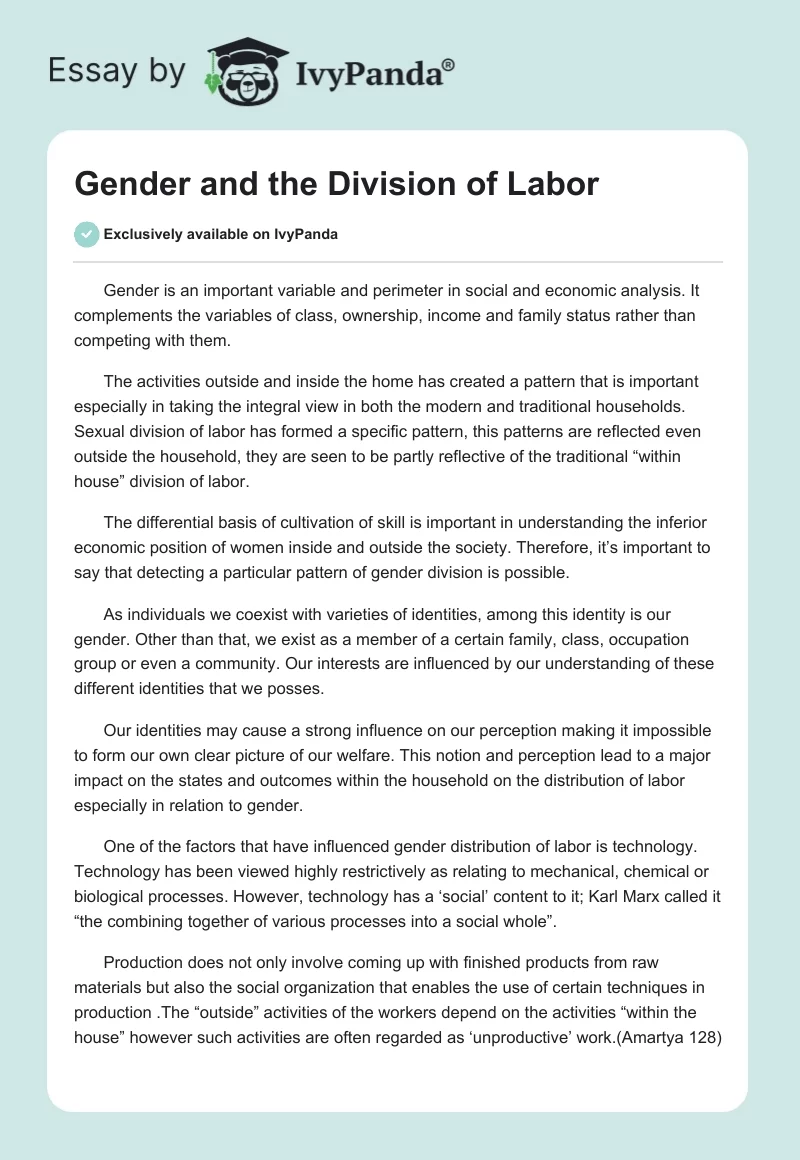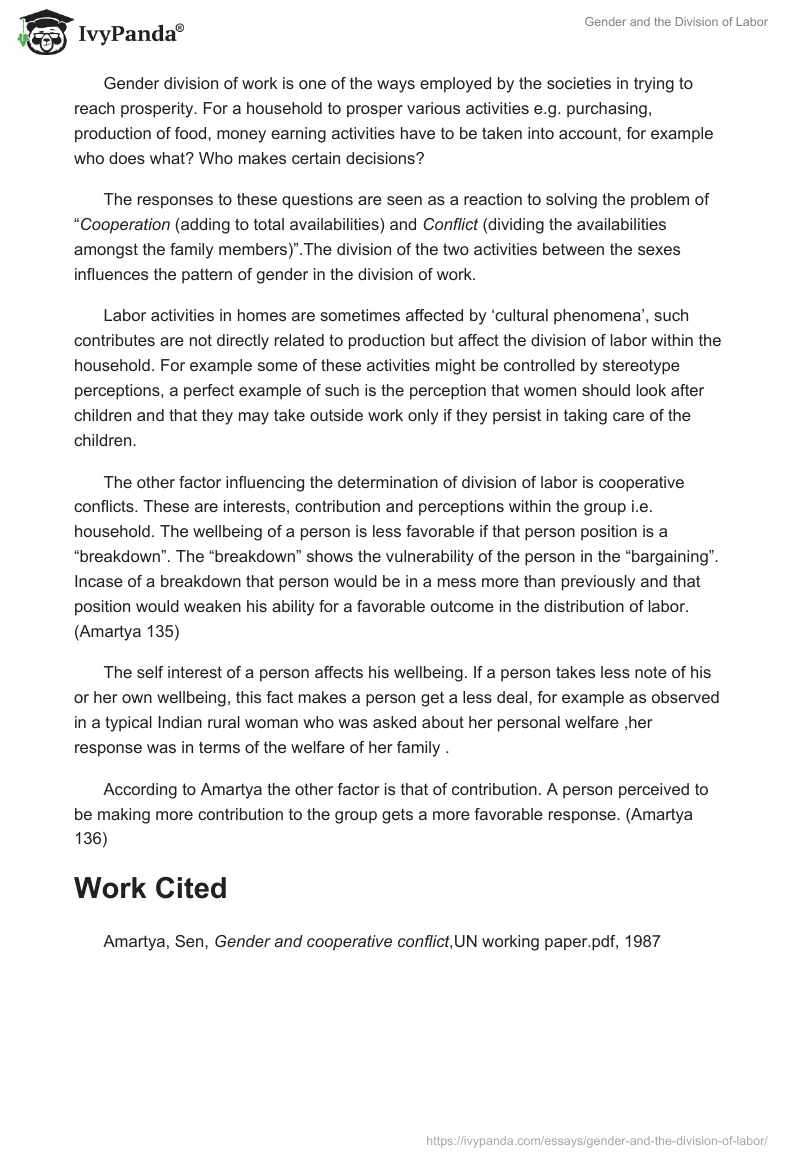Gender is an important variable and perimeter in social and economic analysis. It complements the variables of class, ownership, income and family status rather than competing with them.
The activities outside and inside the home has created a pattern that is important especially in taking the integral view in both the modern and traditional households. Sexual division of labor has formed a specific pattern, this patterns are reflected even outside the household, they are seen to be partly reflective of the traditional “within house” division of labor.
The differential basis of cultivation of skill is important in understanding the inferior economic position of women inside and outside the society. Therefore, it’s important to say that detecting a particular pattern of gender division is possible.
As individuals we coexist with varieties of identities, among this identity is our gender. Other than that, we exist as a member of a certain family, class, occupation group or even a community. Our interests are influenced by our understanding of these different identities that we posses.
Our identities may cause a strong influence on our perception making it impossible to form our own clear picture of our welfare. This notion and perception lead to a major impact on the states and outcomes within the household on the distribution of labor especially in relation to gender.
One of the factors that have influenced gender distribution of labor is technology. Technology has been viewed highly restrictively as relating to mechanical, chemical or biological processes. However, technology has a ‘social’ content to it; Karl Marx called it “the combining together of various processes into a social whole”.
Production does not only involve coming up with finished products from raw materials but also the social organization that enables the use of certain techniques in production .The “outside” activities of the workers depend on the activities “within the house” however such activities are often regarded as ‘unproductive’ work.(Amartya 128)
Gender division of work is one of the ways employed by the societies in trying to reach prosperity. For a household to prosper various activities e.g. purchasing, production of food, money earning activities have to be taken into account, for example who does what? Who makes certain decisions?
The responses to these questions are seen as a reaction to solving the problem of “Cooperation (adding to total availabilities) and Conflict (dividing the availabilities amongst the family members)”.The division of the two activities between the sexes influences the pattern of gender in the division of work.
Labor activities in homes are sometimes affected by ‘cultural phenomena’, such contributes are not directly related to production but affect the division of labor within the household. For example some of these activities might be controlled by stereotype perceptions, a perfect example of such is the perception that women should look after children and that they may take outside work only if they persist in taking care of the children.
The other factor influencing the determination of division of labor is cooperative conflicts. These are interests, contribution and perceptions within the group i.e. household. The wellbeing of a person is less favorable if that person position is a “breakdown”. The “breakdown” shows the vulnerability of the person in the “bargaining”. Incase of a breakdown that person would be in a mess more than previously and that position would weaken his ability for a favorable outcome in the distribution of labor. (Amartya 135)
The self interest of a person affects his wellbeing. If a person takes less note of his or her own wellbeing, this fact makes a person get a less deal, for example as observed in a typical Indian rural woman who was asked about her personal welfare ,her response was in terms of the welfare of her family .
According to Amartya the other factor is that of contribution. A person perceived to be making more contribution to the group gets a more favorable response. (Amartya 136)
Work Cited
Amartya, Sen, Gender and cooperative conflict, UN working paper. 1987. Web.


